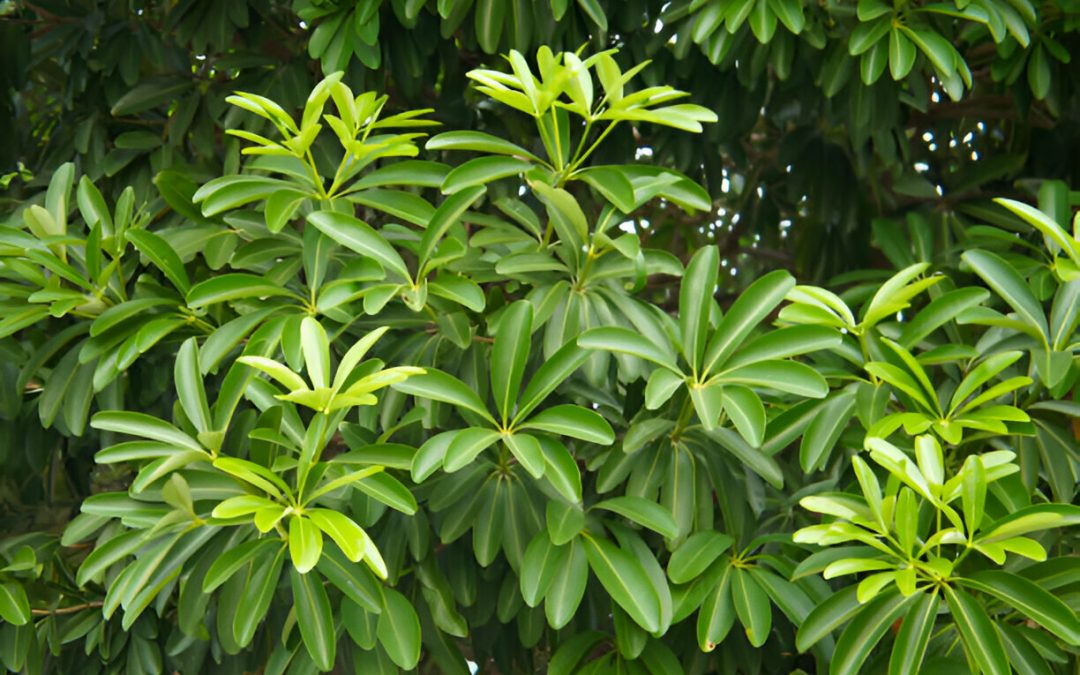Canopy plants, also known as bantam canopy trees, are known for their dense, green appearance and basic maintenance like indoor plants. For their overall development and well-being, it is essential to provide the right lighting conditions. These plants thrive in well-lit areas with indirect sunlight, like next to a window with filtered sunlight.
Their leaves can be damaged by direct sunlight, while insufficient light causes stunted growth and thin leaves. It is essential to find the right balance: positioning plants in a spot where they receive mild, indirect sunlight for a few hours daily will help them thrive and remain vibrant inside. Knowing their lighting preferences is important to keep them looking healthy and vibrant.
Understanding Light Requirements
Trees in the tropics thrive in bright, indirect light. In their natural habitat, dwarf umbrella tree soil is the canopy of large trees, receiving filtered sunlight. Therefore, they are ideal for interiors where too much direct sunlight can be harmful.
Indoor lighting guidelines
When developed inside, place your bantam umbrella tree close to a window where it can get splendid, backhanded light. A northbound window is great, as it gives delicate daylight over the day without presenting the plant to brutal noontime sunbeams. East- or west-facing windows can also work well, but be careful of the intense afternoon sun, which may necessitate the use of sheer curtains to block the light.
On the off chance that regular lighting is limited in your space, supplement with fake lighting using fluorescent or draw-produced lights. Position these lights at a distance above the plant and leave them illuminated for approximately 12-14 hours daily to simulate typical daylight duration. This is especially beneficial in Norfolk, Virginia, because winters are cloudy, and daylight hours are limited.
Consideration for Lighting of Dwarf Umbrella Tree Outdoors
Dwarf umbrella trees can do well outside in Norfolk, Virginia, particularly in the warmer months. Choose a location that receives some shade and filtered sunlight when taken outside. The ideal conditions include morning sun and dappled shade throughout the day. A lot of direct daylight can sear the leaves, especially in blistering summer evenings.
Ensure the dwarf umbrella tree cuttings are on time to protect it from powerful winds while positioning it outdoors to avoid harm. Think about moving the plant to a safer location to avoid leaf damage and reduce stress caused by extreme temperatures. It is crucial to monitor the brightness for your dwarf umbrella tree to flourish, paying attention to both the length and strength of the light it gets.
Too much sunlight can cause sunburn, as shown by the appearance of yellow or brown spots on the leaves. Lack of adequate light results in plants growing tall and sparsely, with slow development. Frequently monitoring your plant will guarantee it gets the right amount of light. Move it into the right position if you notice any signs of mild stress. Keep in mind that adjusting a light for a dwarf umbrella tree outdoors gradually is easier than making sudden changes.
Light intensity monitoring
Monitoring the amount of light duration and intensity that your dwarf canopy tree gets is crucial. The hottest sunlight can cause sunburn. It is indicated by the presence of yellow or brown spots on the leaves. However, lack of sufficient light inhibits plant growth and causes thin foliage.
Regularly check your plant to ensure it receives the proper amount of light. Adjust its position accordingly if you notice signs of light stress. Remember, it’s easier to acclimate your plant gradually to different lighting conditions rather than making sudden changes.
Additional Care Tips
Make sure the soil for the dwarf umbrella tree is of good quality and well-draining, as is a well-balanced potting mix for houseplants. When the topsoil is dry, give the water to the plants and monitor the moisture content regularly. To prevent root rot, make sure not to overwater the plant.
Propagating your plant collection by taking dwarf umbrella tree cuttings from small canopy trees is a useful way to expand your inventory. Root the healthy stems in a moist potting mix using at least a few leaves. Maintain high humidity around the cuttings to encourage root development until they are established.
Consider dwarf shade tree soil needs for outdoor growth, including organic matter for drainage and food storage. Mulching the base of the plant in hot weather will help keep the roots cool and moist.
Are Your Dwarf Umbrella Trees Thriving in Norfolk, VA?
Are you looking for cuttings from a dwarf umbrella tree in Norfolk, Virginia? Find out how to keep your dwarf umbrella trees vibrant and lush indoors or out in Norfolk’s climate. From understanding ideal lighting conditions to tips on soil care and engendering, guarantee your plants flourish all year.
Creating the ideal environment for your dwarf canopy trees is easier than you think, whether you’re a seasoned plant enthusiast or just starting. Are you ready to grow green, healthy plants? Take expert care of your lawn today to change it!
Our team is ready to help you with dwarf canopy tree soil or other lawn care issues in Norfolk, VA. Consult us immediately to make your lawn the envy of the neighborhood.
Conclusion
Whether you plant your dwarf umbrella tree in Norfolk, VA indoors or outdoors. The important thing is adequate light for its growth and health. If you want to create a healthy environment plan for rapid growth. You can do this by understanding its native environment and its preference for bright, indirect light. For a flourishing dwarf umbrella tree in your home or garden, monitor the intensity of the light, make any necessary adjustments, and supplement with proper soil care and occasional propagation. If you follow these hints, you’ll be able to appreciate the lush, green foliage all year long.


